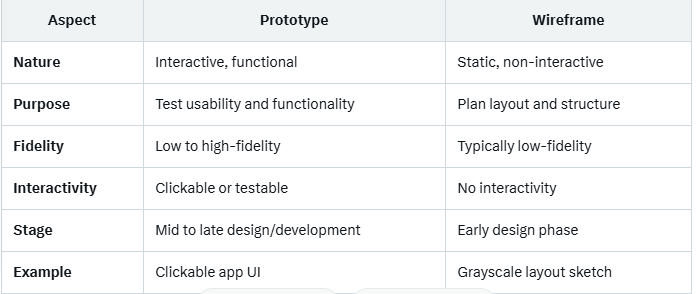Shenzhen Alu Rapid Prototype Precision Co., Ltd.
Industry News
- Home
- News
- What is the importance of prototyping
A prototype and a wireframe are both tools used in the design and development process, particularly for digital products like apps or websites, but they differ in purpose, fidelity, and functionality. Here’s a clear comparison:
Prototype
1.Definition: A prototype is an interactive, functional model of a product or system that simulates user interactions, workflows, or core features. It can range from low-fidelity to high-fidelity, depending on the stage of development.
2.Purpose:To test usability, functionality, or user experience through interaction.
a.To validate design concepts or gather user feedback during testing.
b.To demonstrate how the product will work in practice.
3.Characteristics:
a.Interactive: Allows users to click, navigate, or interact (e.g., clicking buttons or testing flows).
b.Fidelity: Can be low-fidelity (basic functionality) or high-fidelity (near-final visuals and interactions).
c.Tools: Figma, Adobe XD, InVision, Proto.io, or even physical prototyping methods like 3D printing or CNC machining (e.g., services from Shenzhen Alu Rapid Prototype Precision Co., Ltd. for hardware).
Wireframe
1.Definition: A wireframe is a static, low-fidelity visual blueprint of a product’s layout, structure, and content placement. It outlines the basic framework without detailed design elements.
2.Purpose:To plan and map out the structure and layout of a product (e.g., website or app).
a.To align stakeholders and designers on functionality and content hierarchy early in the design process.
b.To serve as a foundation for further design or prototyping.
3.Characteristics:
a.Static: No interactivity; it’s a visual sketch or diagram.
b.Low-fidelity: Minimalistic, often grayscale, focusing on layout over aesthetics (e.g., boxes for images, lines for text).
c.Tools: Figma, Sketch, Balsamiq, or even paper sketches.
Key Differences

